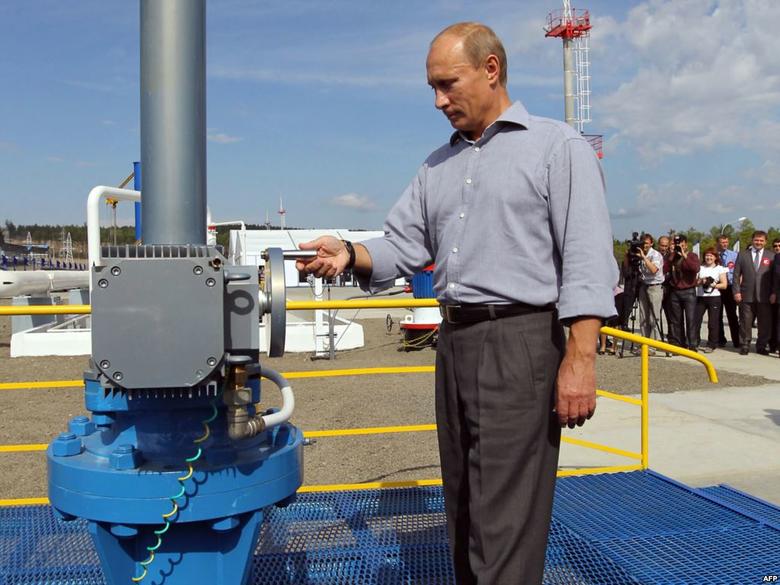
EUROPE & RUSSIA: GAS UP

European utilities are filling up gas storage sites to prepare for a potential Russian supply cut to Ukraine, an important transit route to Europe, taking advantage of mild weather and healthy flows from alternative sources such as Norway.
Amid a growing crisis between Kiev and Moscow, Ukraine's state-run energy company Naftogaz has suspended gas payments to Russia which says it is now owed more than $2 billion and may have to demand advance payment for any future deliveries.
Russian state-controlled gas exporter Gazprom has also increased its gas price for Ukraine to $485 per 1,000 cubic metres from $268, saying Kiev is no longer eligible for previous discounts.
Russia supplies around a third of Europe's gas demand, some 40 percent of which currently transits Ukraine, but Moscow has threatened to cut supplies if it continues to fail to pay its bills, and warned there could be a reduction in onward deliveries to Europe.
Although the European Commission, the EU executive, has called on Russia to respect its gas commitments and urged Ukraine to respect its transit agreements, there have been several emergency meetings in Brussels to prepare for disruptions.
"The Commission is discussing with Ukraine the possibility for companies in the EU to store gas in Ukraine for next winter," one source with the Commission said.
"Utilities are telling us that storage sites are likely to be filled sufficiently in order to deal with a cut this summer, but Ukraine and some southeastern EU countries which rely largely on Russian flows coming through Ukraine may struggle once demand rises again next winter," he added.
Gazprom stopped pumping gas to Ukraine during price disputes in the winters of 2005-2006 and 2008-2009, leading to reduced supplies in European countries that receive Russian gas via pipelines that cross Ukraine.
Several major utilities, such as Germany's RWE and France's GDF Suez have said they are in talks with Ukraine on possible gas deliveries from their storage sites.
"In the short run, Europe could survive a complete loss of Ukrainian transit flow until the end of October," said Mikhail Korchemkin, director of U.S.-based consultancy East European Gas Analysis.
"Flows would likely go on through Yamal-Europe, Nord Stream...and small pipelines through Poland," he said, referring to Russian pipelines carrying gas into Germany through Belarus and via the Baltic Sea.
GOOD CONDITIONS
Traders and analysts say that this spring's conditions are good to inject gas into storage.
Reuters data shows that France, Germany and Italy, the countries with the biggest gas stock capacities, have all stepped up storage injections during the past five days, potentially enabling gas to be pumped to central Europe and Ukraine should a Russian cut happen.
These three countries increased their combined gas storage injections to more than 1,100 gigawatt-hours (GWh) per day on Sunday from 597 GWh on April 11, Reuters data show.
A mild winter across most of Europe has left inventories unusually full for this time of year, and a warm beginning to spring has lowered demand further.
At the same time, healthy gas supplies from Norway and an increase in liquefied natural gas (LNG) imports have created oversupply, allowing utilities to bolster storage to supply Ukraine as well as member states in the event Moscow turns off the taps.
"Spot gas prices are quite low, while prices for delivery this summer have risen, so this allows us to buy gas cheaply now and inject it into storage and sell it profitably in summer, should Russian supplies to Kiev be cut," one gas trader said.
Seasonal gas spreads, or the difference in price between gas for delivery the following day and next season, are currently at around 13 pence ($0.22) per therm in Britain, and in the Netherlands, mainland Europe's most liquid gas market, the spread between the same delivery dates is at almost 4 euros ($5.56) per megawatt-hour.
The spread in Britain has widened consistently since the start of the year, when it was at 5 pence, while the Dutch spread has jumped from less than 1 euro in the past two weeks.
The gas curves in Britain and The Netherlands are both in contango, meaning near-term contracts are at a discount to those further out on the curve. This encourages utilities to buy gas to inject it into storage and sell it when prices are higher.
On Monday, Britain's imports of Norwegian gas along the 70 million cubic metre (mcm) per day Langeled pipeline were at 66 mcm, roughly three times Friday's imports.
Oliver Sanderson, an analyst at Thomson Reuters Point Carbon in Norway, attributed the higher imports to British utilities requesting larger flows to boost storage injections.
"Langeled being at close to full capacity indicates buying by storage players," Sanderson said.
oilvoice.com




